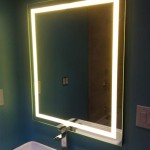How to Mirror Yourself on Zoom for iPad
Mirroring video on Zoom for iPad can be a useful feature in various situations, such as presenting physical objects or demonstrating a skill. This feature reverses the video feed, providing a mirrored view to other participants while the user sees a normal view. This article explains the process of activating and deactivating video mirroring on the Zoom app for iPad.
Understanding the difference between mirroring and rotating is crucial. Rotation changes the orientation of the video (e.g., from portrait to landscape), while mirroring flips the video horizontally. This distinction is important because both options affect how participants see the video feed.
Before starting a Zoom meeting, users can configure their video settings. Open the Zoom app and navigate to the Settings menu. This is typically represented by a gear icon and is located within the app's main interface. Upon accessing the settings, select the "Meetings" option.
Within the "Meetings" settings, locate the "Mirror My Video" option. This option is usually accompanied by a toggle switch. Activating the toggle enables video mirroring for all subsequent meetings. Deactivating the toggle ensures the video feed appears normally to other participants.
Users can also enable or disable mirroring during a live Zoom meeting. While in a meeting, tap the screen to reveal the meeting controls at the top and bottom of the screen. Tap the "More" button, often represented by three dots, usually located on the right side of the controls.
In the menu that appears after tapping "More", select the "Meeting Settings" option. This will open a sub-menu mirroring many of the settings found in the main Zoom settings.
Scroll down within these settings to find "Mirror My Video". As in the pre-meeting settings, this option is accompanied by a toggle switch. Tapping the toggle will either activate or deactivate mirroring, depending on its current state. The change takes effect immediately, modifying the video feed seen by other participants.
Participants viewing a mirrored video will see a reversed image. For instance, text will appear backward. This is particularly relevant when presenting materials that contain writing or specific directional elements. Therefore, mirroring should be used judiciously, considering its impact on the clarity of the presentation.
Mirroring is particularly helpful during demonstrations. For example, if a presenter is demonstrating a handwriting technique, mirroring ensures the participants see the writing from the correct perspective, as if they were watching the presenter in person.
Another common application of mirroring is in fitness classes or dance tutorials. Mirroring allows participants to follow the instructor's movements more easily, as they see the instructor's actions reflected as if they were looking in a mirror themselves.
It’s important to note that mirroring affects only the video feed seen by other participants. The presenter's own view of their video remains unmirrored. This allows the presenter to maintain a natural perspective of their own actions and surroundings.
Troubleshooting mirroring issues usually involves verifying the toggle status within the Zoom settings. If mirroring is not functioning as expected, double-check the "Mirror My Video" option in both the general meeting settings and the in-meeting settings to ensure it's correctly configured.
Sometimes, restarting the Zoom app can resolve temporary glitches that might be affecting the mirroring feature. If the issue persists, ensure the Zoom app is updated to the latest version, as older versions may have bugs or limitations.
If the iPad's operating system is outdated, it could potentially interfere with the functionality of the Zoom app, including the mirroring feature. Keeping the iPadOS up to date is generally recommended for optimal performance and compatibility with various apps.
When presenting slides or screen sharing, mirroring might not be necessary and might even be counterproductive. The content of slides is typically designed to be viewed directly, and mirroring could reverse the order of text and other elements, making the presentation confusing.
Consider the context of the Zoom meeting when deciding whether to enable mirroring. For personal conversations, mirroring might not be necessary. However, for presentations, demonstrations, or fitness instructions, mirroring can significantly improve the viewing experience for participants.
Understanding the mirroring functionality within Zoom provides users with more control over their video presentation and allows for clearer communication in various scenarios. Utilizing this feature appropriately can significantly enhance the effectiveness of online interactions, especially when visual clarity and directional accuracy are essential.

How To Mirror My In Zoom

How To Invert Your On Zoom

How To Mirror My In Zoom

How To Invert Your On Zoom

Easy Steps To Mirror My On Zoom

What Is Mirror My On Zoom How It Works And Should You Enable

How To Invert Your On Zoom

Easy Steps To Mirror My On Zoom

What Is Mirror My On Zoom How It Works And Should You Enable

What Is Mirror My On Zoom How It Works And Should You Enable








